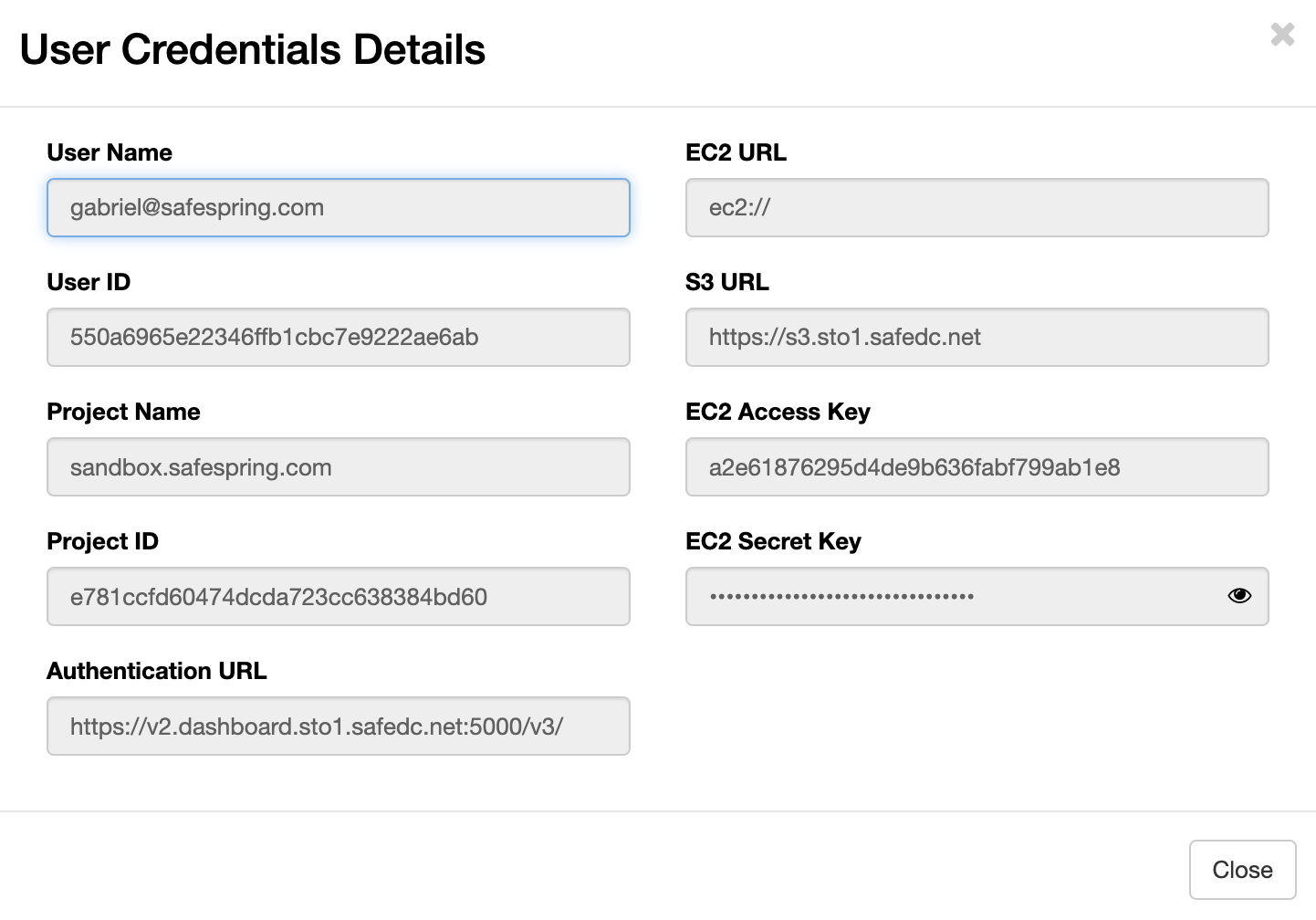General S3 information¶
S3 is an object store, much like an FTP server, except it scales to
much larger sizes and uses https:// for both integrity, safety and
accessibility.
Get S3 credentials¶
S3 credentials are mapped to projects in Safesprings Compute platform. This means that if you want to get credentials for S3 you will have to login into version 2 of Safesprings Compute platform and then choose "Project" up to the right and then API Access. You will now see a button which says "View Credentials" and if you click that you will be precented with an information screen:
- S3 URL: this is the service point URL to which to direct your S3 Client.
- EC2 Access Key: the S3 access key
- EC2 Secret Key: the S3 secret key

Note
Every project in Safespring Compute has one S3 account connected to it but one project can have several users. This means that when different users press the "View Credentials" button in Safespring Compute they will get different key pairs of access and secret keys. Important to understand is that these different key pairs will give access to the SAME S3 account, tied to the project.
Minimum required info for S3 access¶
Many clients will assume you are talking to AWS S3, in which case they might
want you to add region and country and other information. This information isn't
used by our endpoint, so you should be able to get many clients going with only
access_key, secret_key. The access- and secret keys are not personal, so
you should store them securely and share them within a project.
Note
In a future update, we will offer personal S3 credentials that are valid within a project.
The https URLs to the service:
New URLs
- New Norwegian site - https://s3-archive.osl1.safedc.net
- Norwegian site - https://s3.osl1.safedc.net
- Swedish site - https://s3.sto1.safedc.net
- New Swedish secondary site - https://s3-archive.sto2.safedc.net
The URL change was due to the rename from IPNett to Safespring of our company. The old IPNett URLs have now expired and all new client configurations should point to the new safedc names.
The new safedc.net S3 URLs contain wildcard subdomain certificates so that
clients, libraries or frameworks who insist on accessing the domain with https://BUCKETNAME.URL/dir/object
for an object named https://URL/BUCKETNAME/dir/object will work as expected.
This feature is not yet fully tested but we'll update this documentation when
it is.
Buckets, directories, files and objects¶
Your account will allow you to log in to the service, but in order to
store anything in it, you must first make a bucket. In the AWS
service, the bucket name you choose will become a dns CNAME entry
(makes sense in order to be able to load-balance among millions of
customers) which makes the bucket names limited to what is acceptable
as a DNS entry.
For most GUI and text-based clients, the bucket will be
indistinguishable from a directory. Inside that bucket you may create
directories and/or files. Creating more than one bucket is possible,
but do mind that it can fail if the name isn't unique, or the name of
it would not work as a DNS entry. The directories and files inside can
have names with more variation of course.
S3 bucket naming constraints¶
In earlier setups we were running with rgw_relaxed_s3_bucket_names set to
true. This allowed a bit more characters but could cause issues with clients
& solutions expecting the stricter standard bucket naming constraints. To avoid
such issues in the future we are now running with the default constraints
which can be seen here
https://docs.ceph.com/en/octopus/radosgw/s3/bucketops/#constraints.